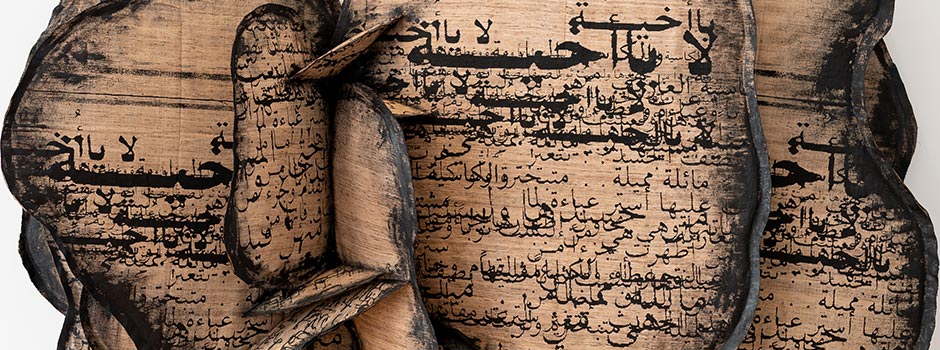
Solo show at Gallery Isabelle van den Eynde (5 Oct - 23 Dec 2021) Manal AlDowayan: The Eternal Return of the Same
Dec 19, 2021 INSPO, Exhibition

 Manal AlDowayan / Photo by April Morais
Manal AlDowayan / Photo by April Morais
While the exhibition may provide a moment of reflection on the need for reckoning, it also bears AlDowayan's hallmark critical assessment of a world rife with inequity and uncertainty. The Emerging (2021) is a series of thirty jesmonite casts. Unevenly textured, pocked with finger marks and smoothed over by hand, the cluster of distinct floor-bound appendages of body parts question how women are renegotiating their bodies and the spaces they inhabit. As they are increasingly joining the Saudi public sphere, away from the 'counter-public,' exclusively female enclaves of empowerment, women are forced to (re)claim a stake in the patriarchal arena. The Recline (2020), a large tapestry in which the limb morphs and mirrors itself, conjuring a reclining female form, poised above a cascade of loose, unravelled (or not yet woven) linen threads. The work exemplifies the notion of repetition and the artist's challenge to the traditional craft of weaving.
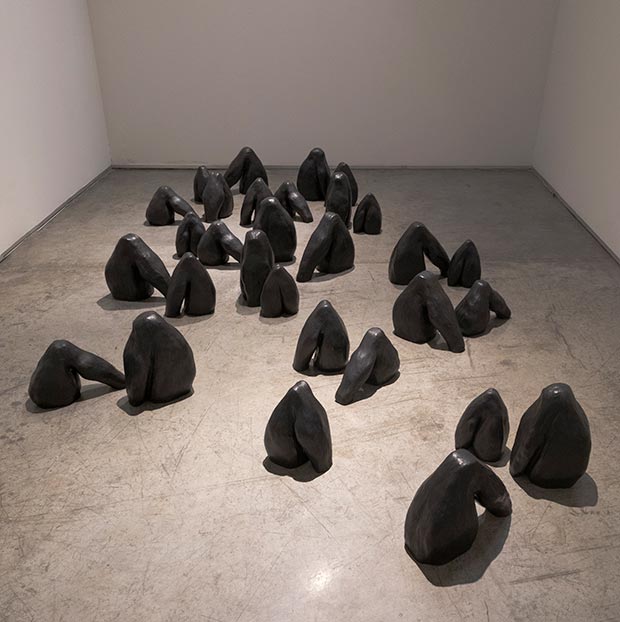 Manal AlDowayan, The Emerging, 2021 / Courtesy the artist and Gallery Isabelle van den Eynde
Manal AlDowayan, The Emerging, 2021 / Courtesy the artist and Gallery Isabelle van den Eynde
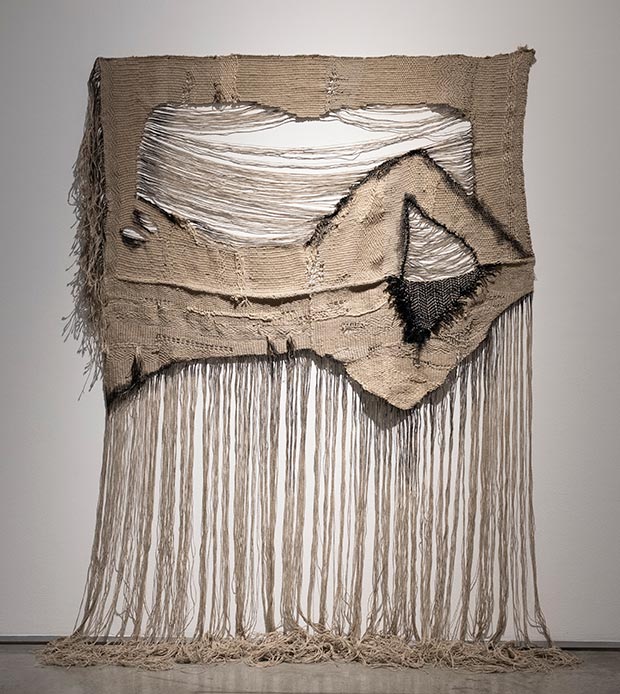 Manal AlDowayan, The Recline, 2021 / Courtesy the artist and Gallery Isabelle van den Eynde
Manal AlDowayan, The Recline, 2021 / Courtesy the artist and Gallery Isabelle van den Eynde
Just as The Emerging frames an exuberant individuality against a crushing societal sameness, two soft sculptures, Ephemeral Witness (2019) and O Sister (2021), confront the blanket' instruction manual' mentality of religious injunctions with an individualist feminine energy. Resistant yet refined, the natural silk of the sculptures is printed with instructions penned by religious men determining women's 'use' of their bodies. The inky texts blur on the ridged fabric surface, their legibility confounded by strokes of charcoal. While Ephemeral Witness hangs, inviting the viewer to scrutinise its cleft opening and poised verticality, O Sister (2021) spreads its soft, collapsible, darkly burnished flaps in an ironic embrace. Part of a generation deeply impacted by conservative laws against women in Saudi Arabia, AlDowayan teases out a new tension in these works, raising questions about physical emancipation at the very moment the Kingdom ostensibly moves towards greater social freedoms.
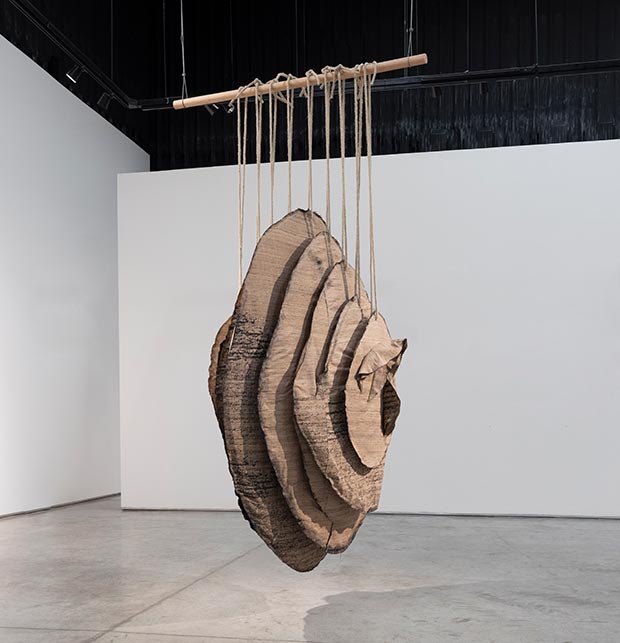 Manal AlDowayan, Ephemeral Witness, 2020 / Courtesy the artist and Gallery Isabelle van den Eynde
Manal AlDowayan, Ephemeral Witness, 2020 / Courtesy the artist and Gallery Isabelle van den Eynde
 Manal AlDowayan, O Sister, 2021 / Courtesy the artist and Gallery Isabelle van den Eynde
Manal AlDowayan, O Sister, 2021 / Courtesy the artist and Gallery Isabelle van den Eynde
 Manal AlDowayan, I wonder do you see me, 2019 / Courtesy the artist and Gallery Isabelle van den Eynde
Manal AlDowayan, I wonder do you see me, 2019 / Courtesy the artist and Gallery Isabelle van den Eynde
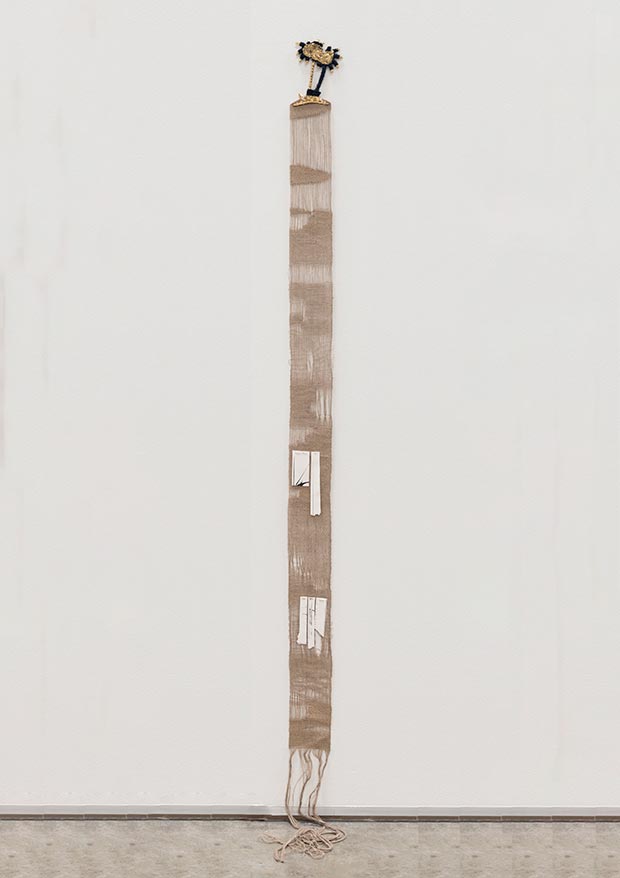 Manal AlDowayan, Suspended Palm 9, 2019 / Courtesy the artist and Gallery Isabelle van den Eynde
Manal AlDowayan, Suspended Palm 9, 2019 / Courtesy the artist and Gallery Isabelle van den Eynde
Similarly, Just Paper (2019) interrogates the textual manifestations of patriarchal power structures by aiming for archival memory. Upending the longevity of the printed, archival form of written texts, Al Dowayan renders religious and linguistic texts in delicate rolls of fragile porcelain. Easily crushed, the porcelain rolls bear prescriptive religious texts like those on the two soft sculptures and definitions are taken from a millennium-old book on the jurisprudence of the Arabic language. Here we find the extended family of words that transcribe varying intensities of sadness, entrapment, fever, anger, tightness, insanity… Replicated and cast across a table, the vulnerable porcelain scrolls are emblematic of AlDowayan's artistic output: stunning works in appearance, harbouring challenging elements within.
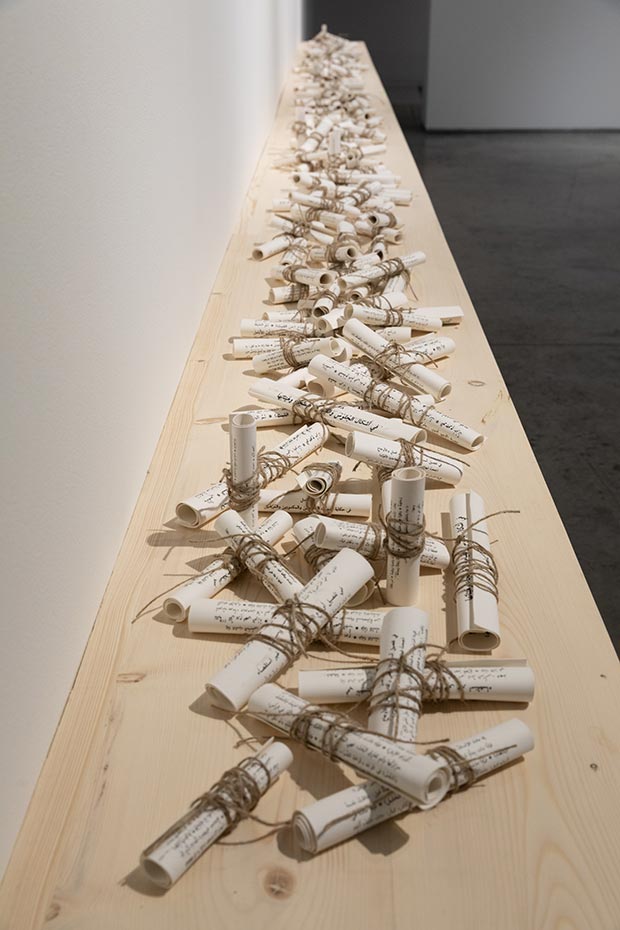 Manal AlDowayan, Just Paper, 2021 / Courtesy the artist and Gallery Isabelle van den Eynde
Manal AlDowayan, Just Paper, 2021 / Courtesy the artist and Gallery Isabelle van den Eynde
Like many artists, AlDowayan has viewed current life through the prism of the singular, inescapable space of her London home. As a result, her awareness of the day-in-day-out repetition of actions and gestures intensified. The Eternal Return of the Same conflates this recurrence of the mundane, the growing opacity of time through ritualisation, an uneasy sense of settled uncertainty, with the process of reckoning Saudi women of her generation must undertake, given the seismic changes in the Kingdom. Yet repetition, the exhibition implies, can become a site of newness in its gentle shifting and distortion of the familiar.
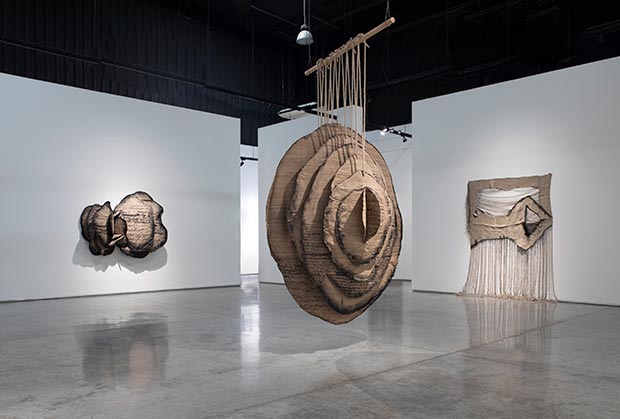 Manal AlDowayan, The Eternal Return of the Same, 2021. Installation view at Gallery Isabelle van den Eynde / Courtesy the artist and Gallery Isabelle van den Eynde
Manal AlDowayan, The Eternal Return of the Same, 2021. Installation view at Gallery Isabelle van den Eynde / Courtesy the artist and Gallery Isabelle van den Eynde
.jpg) Manal AlDowayan, The Eternal Return of the Same, 2021. Installation view at Gallery Isabelle van den Eynde / Courtesy the artist and Gallery Isabelle van den Eynde
Manal AlDowayan, The Eternal Return of the Same, 2021. Installation view at Gallery Isabelle van den Eynde / Courtesy the artist and Gallery Isabelle van den Eynde
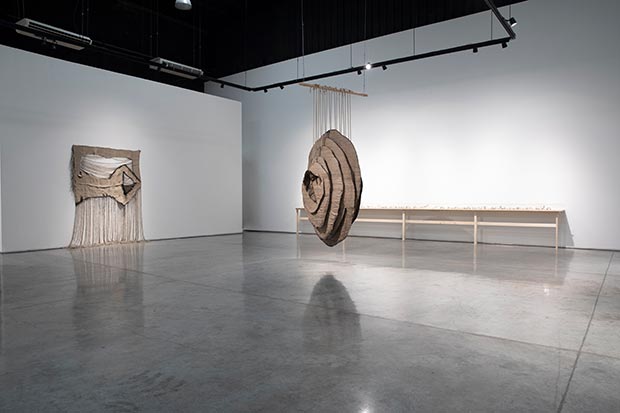 Manal AlDowayan, The Eternal Return of the Same, 2021. Installation view at Gallery Isabelle van den Eynde / Courtesy the artist and Gallery Isabelle van den Eynde
Manal AlDowayan, The Eternal Return of the Same, 2021. Installation view at Gallery Isabelle van den Eynde / Courtesy the artist and Gallery Isabelle van den Eynde
Few artists understand metamorphosis as keenly as Saudi artist Manal AlDowayan. Long invested in interrogating the gender-biased customs that impact the condition of women in Saudi Arabia, AlDowayan is a sensitive yet critical witness to the cultural transformations engulfing the Kingdom. Her practice, formally speaking, regularly shifts and evolves. From the powerful black and white photographic portraits of highly skilled working women in the I Am series (2005) to the research-driven Crash (2014), which documents media silence on fatal road accidents involving commuting female schoolteachers. Equally recognised for her sound, neon, and sculpture work, AlDowayan is perhaps best known for the participatory installations Suspended Together (2011) and Esmi-My Name (2012). The result of workshops is offering channels for thousands of women in the Kingdom to address unjust social customs, and more recently, Now You See Me, Now You Don't (2020), land art for Desert X AlUla.
AlDowayan's practice navigates a territory where the personal and the political overlap. Her works spring from lived experiences—these intimate encounters with social injustice, the pangs of memory and forgetting. Yet her pieces are consistently galvanising, sparking identification and engagement, particularly among women worldwide. Her voice is strong, and it resonates. Unsurprisingly, the artist's gaze unravels the expected tensions running through the fibre of Saudi society—public vs private, traditional vs modern, community vs the world. But as the Kingdom races towards further change, AlDowayan's artistic engagement with this new metamorphosis promises to be bolder and more incisive than ever.
In 2021, AlDowayan participated in the Northern Alps Festival, Omachi, Japan, and the first contemporary Art Biennale in Saudi Arabia, the Ad-Diriyah Biennale. In addition, she has exhibited extensively, including Reflections: Contemporary Art of the Middle East and North Africa at the British Museum (2021), at 21,39 Jeddah Arts (2020 and 2017), Boghossian Foundation, Brussels (2018), The Aga Khan Museum (2018), Crude, the inaugural exhibition of Jameel Arts Centre, Dubai (2019), Louisiana Museum of Modern Art, Humlebæk (2016). Her works are part of the collections of The British Museum, London; King Abdulaziz Center for World Culture, Dhahran; Los Angeles County Museum of Art (LACMA); Abu Dhabi Authority for Culture and Heritage (ADACH).
She holds a master's degree in Systems Analysis and Design and an MA in Contemporary Art Practice in Public Spheres from the Royal College of Art, London. Born in Dhahran, Saudi Arabia, in 1973, AlDowayan currently lives and works between London, Dhahran and Dubai.
Saudi artist Manal AlDowayan's works are on view at her first solo show entitled The Eternal Return of the Same at Gallery Isabelle van den Eynde until 23 December 2021.
Comments
Feb 23, 2022 - 15:21:00
Mashallah, very good article. No words for praise. Your words are written in golden water because they are so good. May God bless you and balance what you offer with your good deeds. I really appreciate your site and will always be your follower.
Add a comment